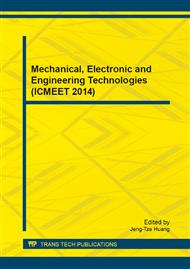p.367
p.371
p.375
p.379
p.383
p.387
p.394
p.398
p.402
On Stereoscopic Machine Vision with Limited Horizons
Abstract:
This paper provides a path planning algorithm based on model that contains 3D vision data. Using this model and a six-legged platform, we propose that limited vision field should be considered in a path planning of 3D vision robot. We also give out a machine learning method to analysis a robot's obstacle capacity, and formed vector to measure it. Based on the model, we designed an algorithm that allow robot to navigate in 3D environment. Observation on its behavior proof that our algorithm and model will allow a robot to pass through random 3D terrain.
Info:
Periodical:
Pages:
383-386
Citation:
Online since:
April 2014
Authors:
Keywords:
Price:
Сopyright:
© 2014 Trans Tech Publications Ltd. All Rights Reserved
Share:
Citation:


